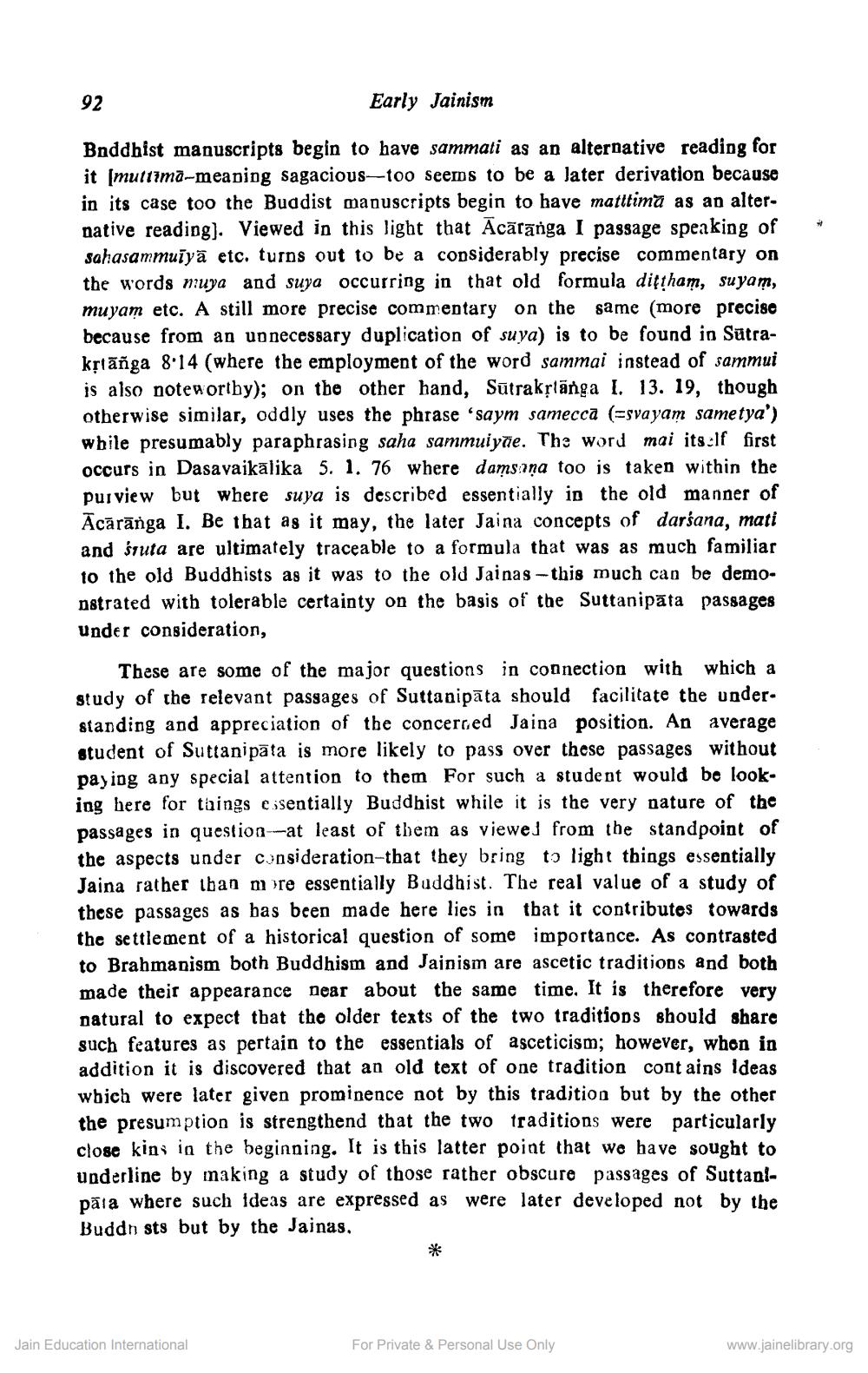________________
Early Jainism
Bnddhist manuscripts begin to have sammati as an alternative reading for it (muttima-meaning sagacious-too seems to be a later derivation because in its case too the Buddist manuscripts begin to have matttima as an alternative reading). Viewed in this light that Acātānga I passage speaking of sahasammuīyā etc. turns out to be a considerably precise commentary on the words muya and suya occurring in that old formula dittham, suyam, muyam etc. A still more precise commentary on the same (more precise because from an unnecessary duplication of suya) is to be found in Sūtrakrtāñga 8.14 (where the employment of the word sammai instead of sammui is also noteworthy); on the other hand, Sūtrakplānga I. 13. 19, though otherwise similar, oddly uses the phrase "saym samecca (=svayam sametya') while presumably paraphrasing saha sammuiyže. The word mai itself first occurs in Dasavaikālika 5. 1. 76 where dams:rna too is taken within the puivie w but where suya is described essentially in the old manner of Ācārānga I. Be that as it may, the later Jaina concepts of darśana, mati and śruta are ultimately traceable to a formula that was as much familiar to the old Buddhists as it was to the old Jainas - this much can be demonstrated with tolerable certainty on the basis of the Suttanipāta passages Under consideration,
These are some of the major questions in connection with which a study of the relevant passages of Suttanipāta should facilitate the understanding and appreciation of the concerted Jaina position. An average student of Suttanipāta is more likely to pass over these passages without paying any special attention to them for such a student would be looking here for things essentially Buddhist while it is the very nature of the passages in question at least of them as viewed from the standpoint of the aspects under consideration-that they bring to light things essentially Jaina rather than m re essentially Buddhist. The real value of a study of these passages as has been made here lies in that it contributes towards the settlement of a historical question of some importance. As contrasted to Brahmanism both Buddhism and Jainism are ascetic traditions and both made their appearance near about the same time. It is therefore very natural to expect that the older texts of the two traditions should share such features as pertain to the essentials of asceticism; however, whon in addition it is discovered that an old text of one tradition contains ideas wbich were later given prominence not by this tradition but by the other the presumption is strengthend that the two traditions were particularly close kins in the beginning. It is this latter point that we have sought to underline by making a study of those rather obscure passages of Suttanlpāla where such ideas are expressed as were later developed not by the Buddn sts but by the Jainas,
Jain Education International
For Private & Personal Use Only
www.jainelibrary.org




